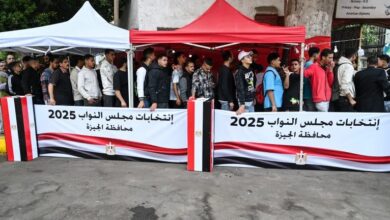Apart from the most controversial amendments proposed to the current constitution, which some of its articles have not been implemented yet, the issue of an electoral quota has been raised in this regard. The first suggestion is to amend Article 102 to provide women with a quarter of the seats in the House of Representatives, instead of the provision in the current constitution stipulating equitable representation of women. The second suggested amendment in this regard is to amend articles 243 and 244 to stipulate appropriate representation for the following six categories: workers / farmers / youth / Christians / people with disabilities / Egyptian expats. This is instead of the stipulation in the current constitution that they should only be properly represented in the present House of Representatives.
In general, many see the suggested amendment to include the seven quotas as a temptation for them to agree to the constitutional amendments, whether in parliament or during the constitutional referendum. In any case, the quota proposal raises several things:
First: The quota system confuses any electoral system, because it causes the legal circles to strive to set specific criteria for the representation of the beneficiaries of the quota. And here will be the problem in determining the proportion of the word “appropriate” for the last six quotas, and determining how to represent the quarter for women (first quota). In other words, the multiplicity of quotas, and being numerous, makes almost any electoral system easy to be appealed against, especially if there are many who oppose the constitutional amendments in principle.
Second: The multi-quota system (seven quotas) makes the legal circles instead of exerting themselves in the search for an optimal electoral system based on a proportional system (known as a list-based system), it makes it automatically lead to the re-establishment of the internationally abandoned electoral system, which is a plurality/majority system, which makes the list, which gets 51%, cancel the existence of the other list, which won 49% of the vote. It is worth mentioning that the majority system in all its forms evokes the political and electoral bribes and religious intolerance during the elections, and the regional performance of the MPs after the elections.
Third: The quota system is a recognition of the inability – for decades – to implement real programs aimed at real representation and integration, not artificial for the beneficiaries of the quota, especially for young people, Christians and people with disabilities. In other words, quota is the easy way for the legislator rather than taking actual empowerment measures for the beneficiaries of quotas.
Fourth: The representation of workers and farmers has proved to be ineffective since 1964. Most candidates have since tried to prove the status of worker/farmer to increase their chances of representation in the parliament. In addition, parliamentarians with the status “professionals” have proven that they are no less in defense of workers’ and farmers’ issues.
Fifth: The previous quota for women was determined by the word (equitable representation) and translated by the legislator in the previous law by electing 56 seats for women and appointing 14 out of a total of 596 seats, equaling 11.74 percent.
This constitutional amendment (women representing 25 percent) will make the legislator increase the representation through the plurality/majority system to increase the representation of women to implement the constitutional amendment.
In other words, the legislator will take the women’s quota as an excuse to expand the use of the flawed plurality/majority system, which is (along with the single vote) proven ineffective in terms of the parliament’s legislative regulatory performance.




